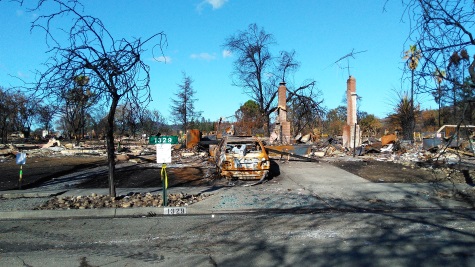The fires in California destroyed many homes and except for a few home sites that may be abandoned for one reason or another, most of these will be rebuilt. Out of the disaster arises an opportunity to design and build replacement homes that are not only more energy efficient than the homes that were lost but, if done properly, can be healthier and more comfortable for their inhabitants.
While building energy codes provide a modicum of energy savings, they fall far short of what can be achieved as they take what largely amounts to a ‘one size fits all’ prescriptive approach. In California, a building’s prescribed level of building insulation and window u-values are based upon its location according to climate zone as defined by the state Title 24 Building Energy Efficiency Standards. The standards do not consider the impact on a building from site-specific landscape features such as topography, shading and wind direction. Sadly, building energy codes do not consider comfort of the building inhabitants, only energy savings.
There are energy conservation measures (ECM) that can yield substantive energy savings while providing greater comfort which are not considered in the building energy code as they are too complex to be ‘dumbed down’ in order to be prescriptive. One of the best examples of this is daylighting which is a very effective ECM yet is not required by the Title 24 Building Energy Efficiency Standards. Why? Because its too complicated. For if designed incorrectly, daylighting can result in overheating conditions. Another example is natural ventilation which harnesses openings in the building envelope and air pressure differentials to cause air to move through the house providing ‘free cooling’. So how do you design a house that incorporates natural lighting and free cooling with real assurances of comfort? Energy modeling.
Interested in a carbon neutral or net-zero home? How you orient the building, shade the glass, incorporate daylighting and passive heating and cooling strategies plus the materials and systems you specify – the sum total of all of these will get you there. Only by using energy modeling can you incorporate all these measures to see the total impact on energy and cost savings. Combine this with life cycle cost analysis and you can even identify those ECMs where you’ll get the greatest return on your investment.
Contact us today!
